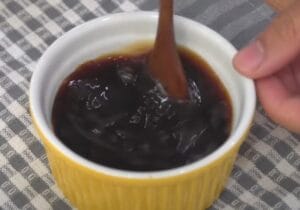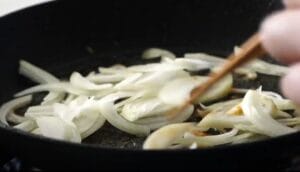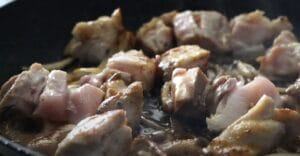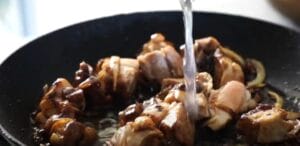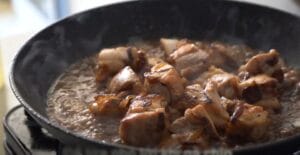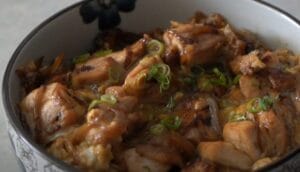Get the secrets on how to make Oyakodon, a savory and heartwarming Japanese rice bowl, with our comprehensive cooking guide.
Oyakodon – The Comforting Chicken and Egg Rice Bowl That Brings Me Back Home
As I stirred the simmering mixture of chicken, egg, and onions in the sweet and savory dashi-based sauce, memories of my childhood came flooding back. The nostalgic aroma instantly transported me back to my grandmother’s cozy kitchen, where she would prepare steaming bowls of oyakodon for my sister and me after school.
I have always loved oyakodon, known as “parent and child rice bowl” for its use of chicken and egg, two ingredients that perfectly complement each other. The contrasting textures of the juicy chicken and soft wobbly eggs mixed with the subtle sweetness of the sauce and the hearty base of rice fills me with happiness and contentment. It’s the kind of soul-warming dish that you crave on a cold day or when you need a comforting pick-me-up.
As an adult living far from home, I decided recently that I wanted to try making oyakodon myself. I hoped recreating this favorite childhood meal would help me reconnect with pleasant memories spent cooking alongside my grandmother. Though my first attempt wasn’t perfect, that familiar sweet and salty sauce with soft eggs and savory chicken over fluffy rice filled me with nostalgia. With each spoonful, I am brought back to my grandmother’s kitchen, where love and warmth always waited in a steaming bowl of oyakodon.
How to make oyakodon – 4 Methods
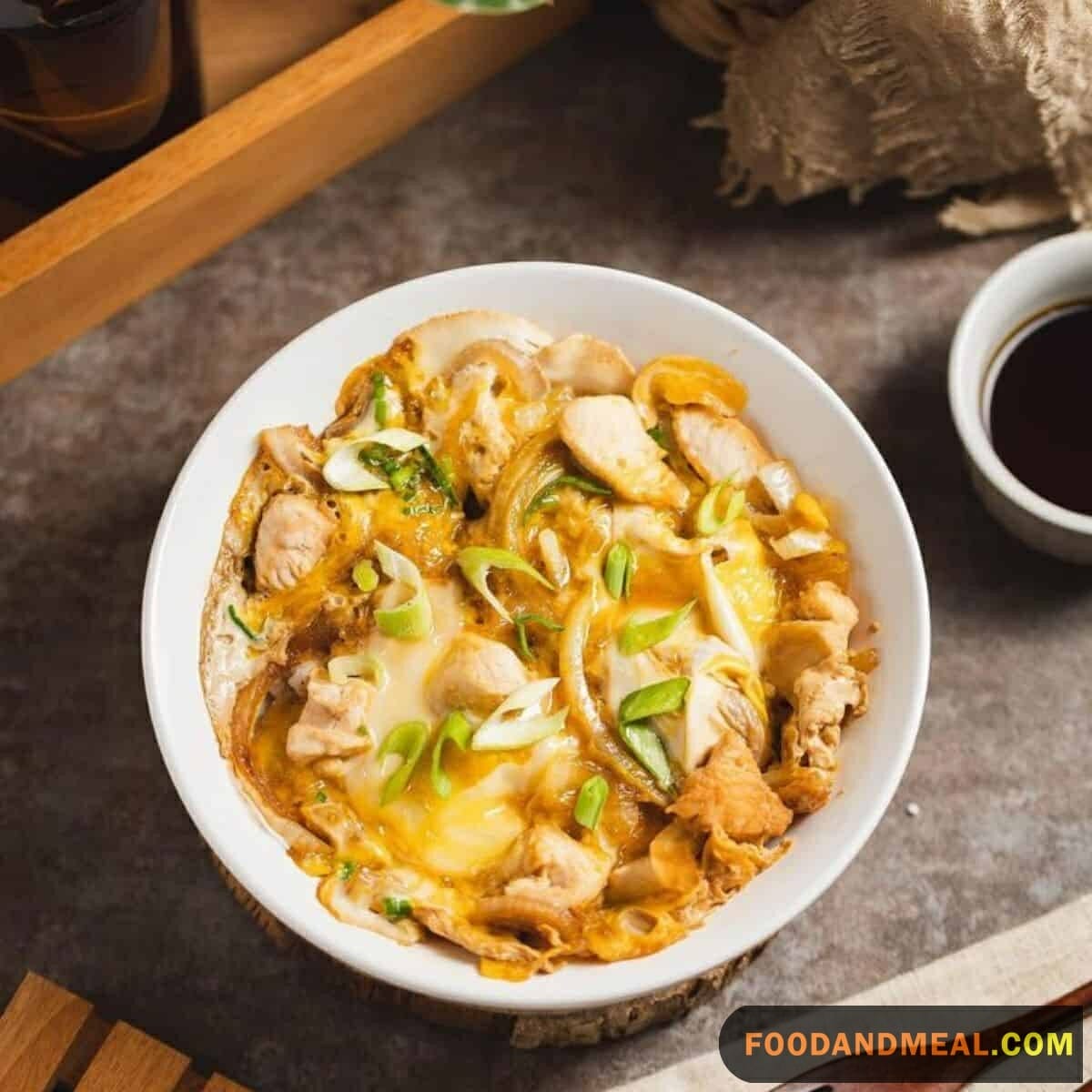
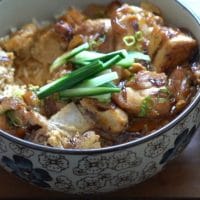
Oyakodon
Ingredients
Instructions
- Combine the sauce ingredients in a bowl and set it aside.

- Season the chicken evenly with ¼ teaspoon salt.

- Place the chicken pieces on an unheated flat-bottomed pan.

- Place the pan on the stovetop (do not turn on the heat yet) and weigh down the chicken pieces by placing another heavy pan (or a pot filled with water) over them to keep them flat.

- Now, turn on the heat to medium. This method allows the chicken to cook evenly and fat to render out. Let the chicken fry until the skin is golden brown (about 7-10 minutes).

- Remove the chicken from the pan and cut it into bite-sized pieces (It may not thoroughly be done at this point).

- Drain any oil from the pan, leaving just a thin coating and any bits from the chicken.

- Return the chicken and its juices to the pan. Add the sake and stir- fry until all the liquid has dried up.

- Add the sauce mixture and bring it to a boil.

- Sprinkle with scallions and pour in the egg.

- Cover the pan and reduce the heat to low. Let it cook until the egg is of the desired doneness.

- Add the rice evenly in each of the bowls!

- Enjoy!

Video
Notes
Nutrition
© Food And Meal
This website provides approximate nutrition information for convenience and as a courtesy only. Nutrition data is gathered primarily from the Spoonacular Database, whenever available, or otherwise other online calculators.
Oyakodon recipe without dashi and mirin
I recently tried making oyakodon, a classic Japanese chicken and egg rice bowl, without the traditional dashi broth or mirin sweet cooking wine. While tasty, it lacked the depth of flavor I was hoping for. However, I realized that the dish’s simplicity and focus on a few quality ingredients aligns with my current values around ethical eating and living more simply. I plan to keep experimenting with different broths and seasonings that feel good to my spirit. Though my first attempt wasn’t perfect, cooking this meal filled me with calm, optimism and connection to the past and future generations who have prepared similar humble, nourishing bowls.
How to make Oyakodon by Instant Pot
Simply add the rice, chicken, onions, dashi, soy sauce, mirin, and sugar to the pot. Close the lid, set to high pressure for 3 minutes, then allow 10 minute natural release. While the pot is releasing, gently beat the eggs with some salt. When the pot beeps, quickly remove the lid, gently pour in the eggs, replace lid, and let sit for 5 more minutes. Garnish with green onions and enjoy this saucy, sweet and savory dish! The tender chicken and soft-set eggs pair nicely with the seasoned rice.
Slow Cooker Oyakodon Recipe
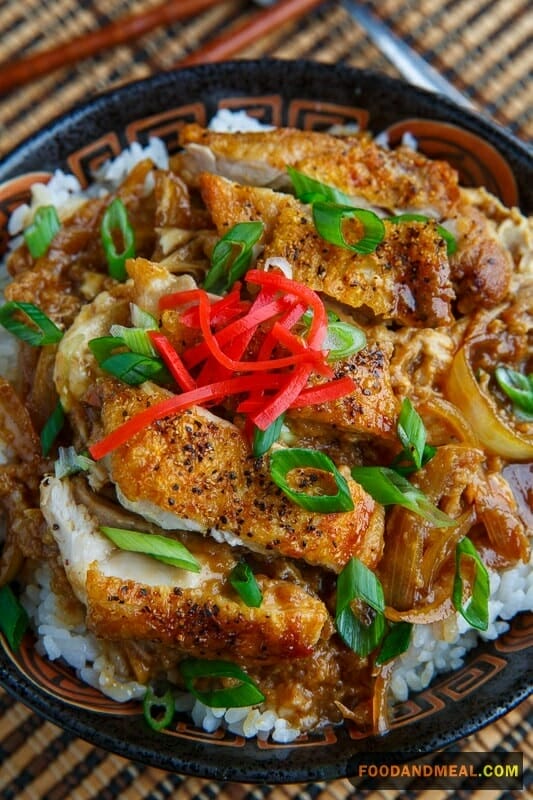
I prefer using my trusty slow cooker to let the onions, mushrooms, and chicken bathe leisurely in the soy sauce mixture and absorb the lovely flavors over several hours. Taking the time to prep the ingredients and then letting them meld together fills me with anticipation for the final product. While I cannot provide an exact number of minutes for cooking Oyakodon in a slow cooker, starting with a range of 2 to 3 hours on high or 4 to 6 hours on low, with close attention paid towards the end of cooking, should yield satisfactory results. Adjustments may be necessary based on the performance of your specific appliance.
When serving the oyakodon, I cannot resist topping the steaming rice and egg chicken mixture with extra green onions. Their bright flavor perfectly balances the rich umami. With the first spoonful, memories of my grandmother’s kitchen wash over me. The soft, fluffy egg and tender chicken comfort and nourish me. This soulful dish never fails to make me smile.
Tips for making Oyakodon Egg Rice Bowls
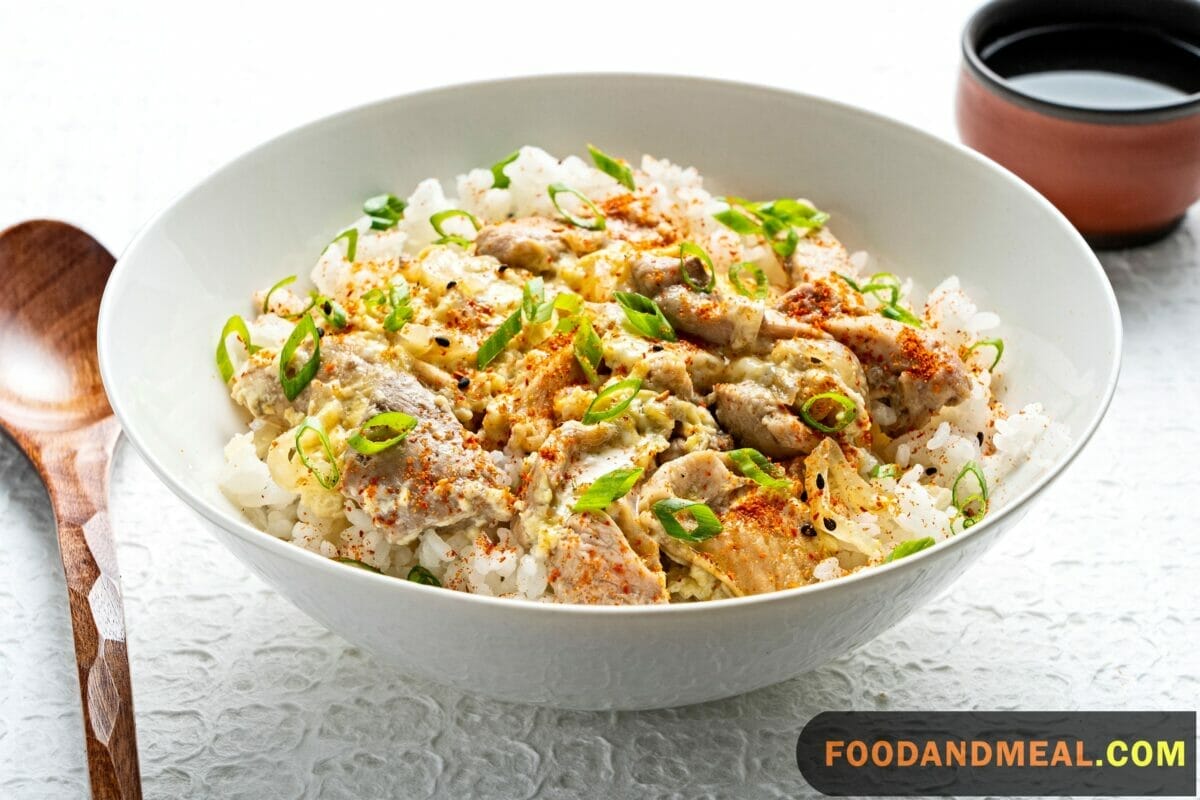
Cooking Notes
The key to this heartwarming meal lies in its delicate balance of flavors and textures. It’s essential to gently simmer the chicken until just cooked, ensuring it remains tender. For the eggs, they should be lightly beaten and poured over the simmering broth and chicken, cooking them softly to achieve a custardy texture that melds harmoniously with the rice.
The dashi-based broth, sweetened with mirin and soy sauce, should be flavorful yet not overpowering, allowing the natural tastes of the chicken and egg to shine through. Adding thinly sliced onions contributes a subtle sweetness and complements the overall dish. Pouring the mixture over a bowl of steaming rice, the aromas alone are comforting, evoking a sense of home and warmth. The joy of oyakodon rests in its simplicity and the nurturing essence it carries, reminding one of the care put into a home-cooked meal.
Serving Suggestions about Japanese chicken and egg rice bowl
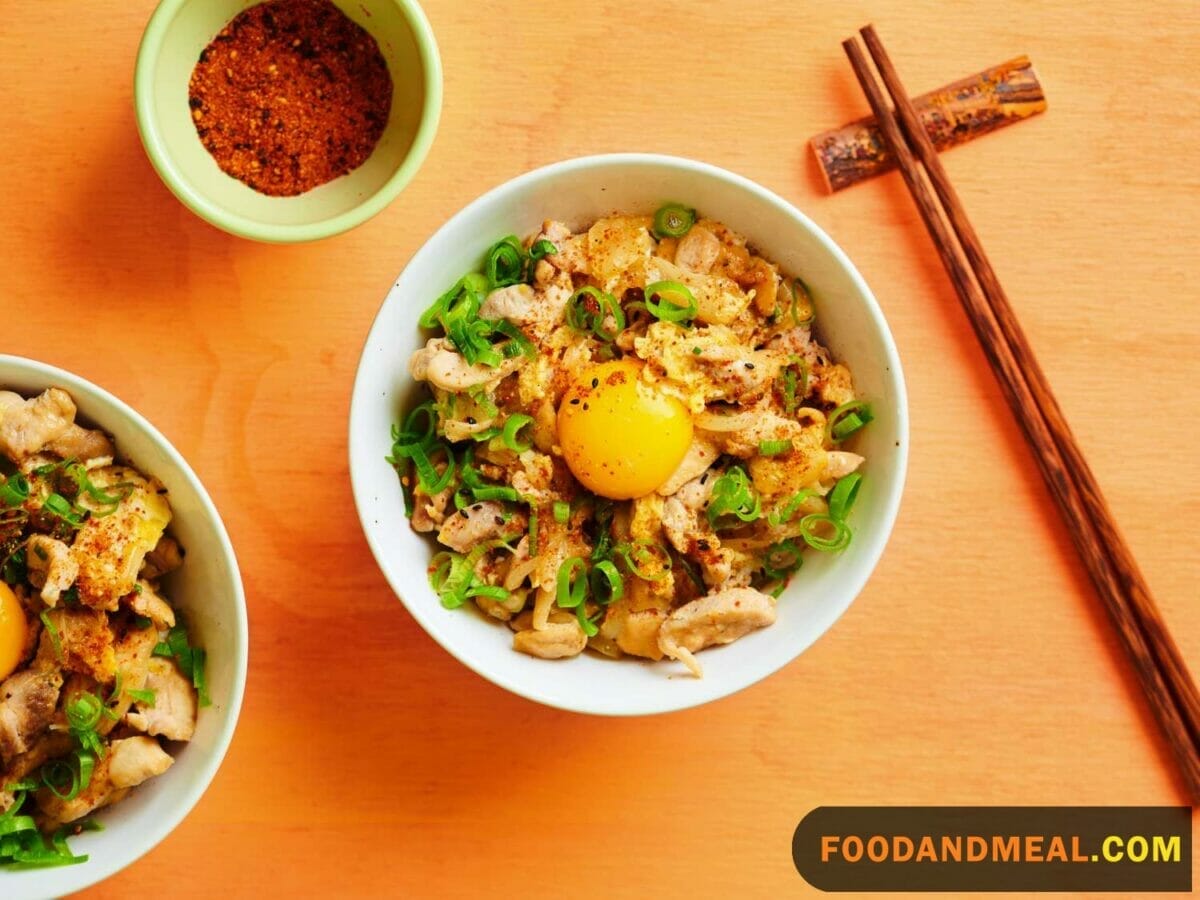
Oyakodon, the comforting parent and child rice bowl, pairs deliciously with a variety of side dishes and beverages.
- For a light, refreshing complement, I suggest serving Japanese Chicken and Rice bowls with a cold soy milk. The subtle sweetness of the soy milk balances the salty-sweet flavors of the oyakodon. Garnish with chopped scallions for a pop of color and flavor.
- If you’d like something heartier, oyakodon egg bowl goes well with crispy gyoza dumplings, the perfect contrast of textures. Dip the pan-fried dumplings in a mix of soy sauce, rice vinegar and rayu (spicy sesame oil) for a kick.
- For extra veggies, a side of pickled daikon radish or cucumber salad adds a tangy crunch. Their bright acidity cuts through the rich egg and sauce mixture nicely.
- I also enjoy pairing oyakodon with hot green tea. The bitterness of the tea leaves accentuates the sweet notes of the dish. Add a splash of whiskey to the tea for a warming, sophisticated touch.
However you choose to complement this Japanese comfort food, oyakodon’s balance of flavors and textures makes it highly adaptable. Play around with different sides and beverages to find your perfect pairing!
Top 9 FAQs about Oyakodon recipe
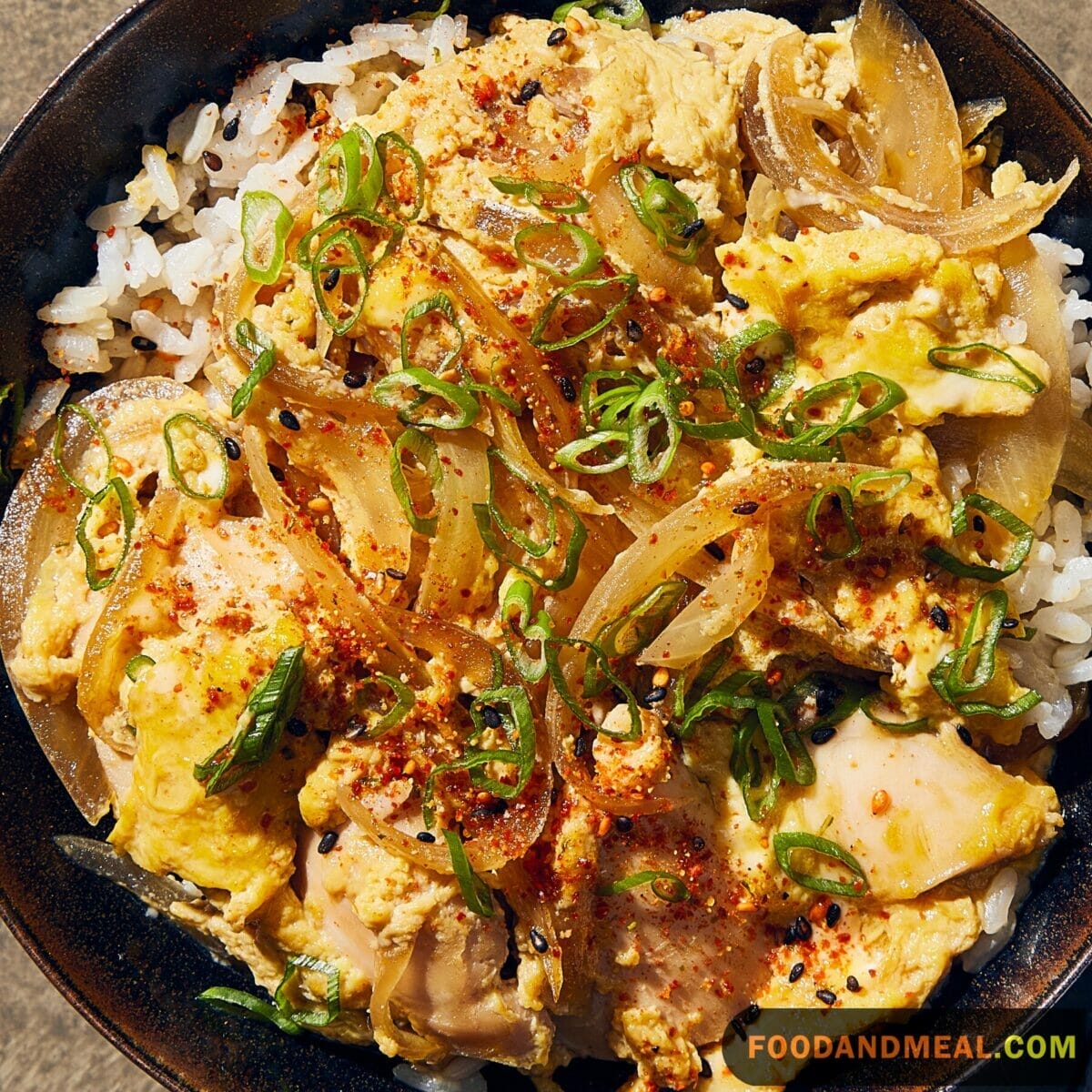
- What is “oyakodon” in Japanese?
- Oyakodon (親子丼) translates to “parent-and-child bowl” in Japanese, referring to a popular dish featuring chicken and eggs served over rice.
- What is the difference between oyakodon and donburi?
- Oyakodon egg bowls is a specific type of donburi, which is a general term for dishes served over rice. Oyakodon specifically includes chicken and eggs, while donburi can feature various ingredients like beef (gyudon) or tempura (tendon).
- What is the difference between Oyako JYU and oyakodon?
- Oyako JYU is a variation of Japanese Chicken and Rice bowls that may include additional ingredients or variations in preparation. “Oyako” still refers to the combination of chicken and eggs, but specific recipes may vary.
- What is the meaning of Oyako food?
- “Oyako” in Japanese cuisine typically signifies a dish that combines chicken (parent) and eggs (child), as seen in oyakodon.
- Can I use chicken breast instead of thighs for Oyakodon?
- Yes, you can use chicken breast, but thighs are preferred for their tenderness and flavor.
- Is mirin necessary, or can I substitute it?
- Mirin adds a unique sweetness to the dish, but you can use a dry white wine with a pinch of sugar as a substitute.
- Can I make Oyakodon in advance?
- Oyakodon is best served fresh, but you can prepare the components in advance and assemble them when you’re ready to eat.
- Can I freeze Oyakodon?
- It’s not recommended to freeze Oyakodon, as the texture of the eggs can change upon thawing.
- How should I store leftover Oyakodon?
- If you have leftovers, store them in an airtight container in the refrigerator for up to two days. Reheat gently in a pan on the stove or in the microwave, being careful not to overcook the eggs.
Conclution
I hope this how to make oyakodon guide has inspired you to try making this rice bowl at home. Though it may take some practice to perfect the technique, recreating this Japanese comfort food is an incredibly rewarding experience. The sweet and salty sauce blanketing juicy chicken, soft egg, and fluffy rice will fill your kitchen with nostalgia and warmth.
Be sure to visit Food And Meal (foodandmeal.com) for more authentic international recipe ideas to make at home. Our blog features dishes from around the globe, allowing you to broaden your culinary horizons from the comfort of your own kitchen. With stunning photography and easy-to-follow instructions, you’ll be able to recreate restaurant-quality meals for your friends and family.
So grab an apron and a bowl of rice – it’s time to transport your tastebuds while making new culinary memories. Oyakodon is the perfect place to start your journey towards becoming a more confident and skilled home cook.
I'm James F Anderson, a noted sous chef from London and a Le Cordon Bleu alumnus. My career began in a Michelin-starred Parisian eatery, where my blend of classic and contemporary cooking, using seasonal ingredients, earned accolades. Recognized in culinary publications and on cooking shows, I’m committed to mentoring aspiring chefs and delivering memorable dining experiences, marking me as a standout talent in the culinary world.

